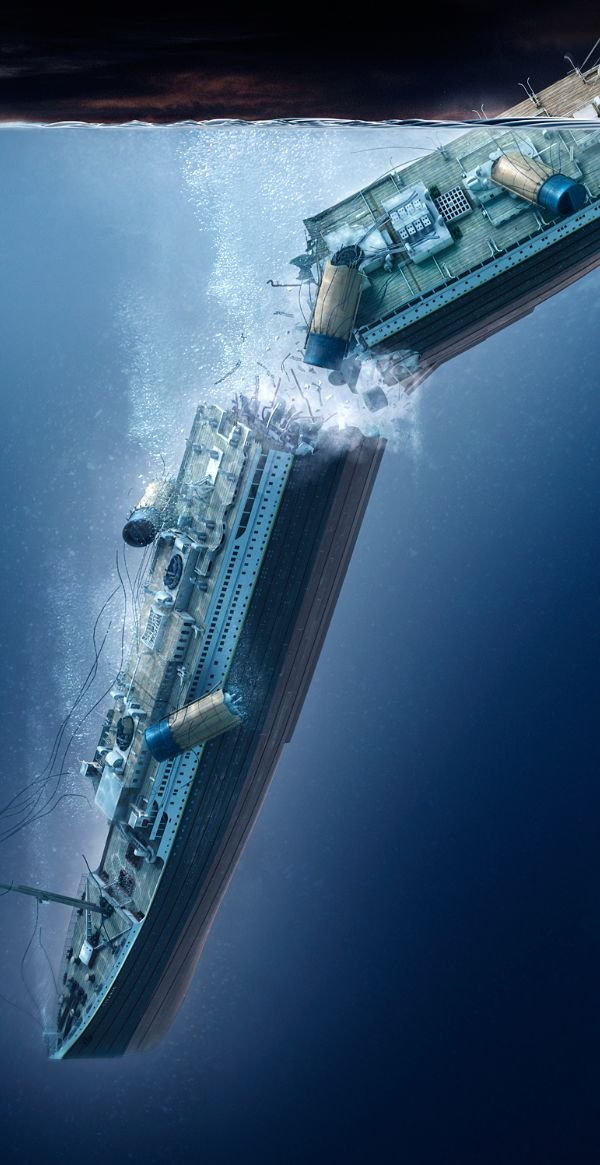The World’s Most Famous Shipwrecks
Introduction: The Ocean’s Hidden Time Capsules
The world’s oceans have long been the resting place of ships that once carried wealth, people, and stories across the seas. Shipwrecks serve as submerged museums, offering glimpses into history, culture, and maritime technology. Some were lost to storms, while others were sunk during wars or accidents. Many became legendary for their cargoes of gold, silver, and priceless artifacts, attracting adventurers and archaeologists alike. The mysteries hidden beneath the waves continue to captivate explorers, historians, and treasure hunters, blending history with intrigue.
The RMS Titanic: Luxury and Tragedy
The Titanic, perhaps the most famous shipwreck of all time, sank in the North Atlantic on April 15, 1912. On its maiden voyage from Southampton to New York, this “unsinkable” ocean liner struck an iceberg, resulting in the deaths of over 1,500 passengers and crew. Beyond the tragedy, the Titanic fascinated the world for its opulence and advanced engineering. Discovered in 1985 by Robert Ballard, the wreck lies in over 3,800 meters of water, its remains remarkably preserved. Artifacts recovered include china, jewelry, and personal items, offering insight into early 20th-century life and maritime culture. The Titanic remains a symbol of human ambition, technological achievement, and the unforgiving power of the ocean.
The Spanish Galleons: Sunken Wealth of the Americas
During the 16th and 17th centuries, Spanish galleons transported gold, silver, and precious gems from the Americas to Europe. Many of these ships were lost to storms, piracy, or navigational errors along the Caribbean and Atlantic coasts. One of the most famous wrecks is the Nuestra Señora de Atocha, which sank in 1622 off the coast of Florida during a hurricane. Discovered in 1985 by treasure hunter Mel Fisher, the ship contained silver, gold coins, emeralds, and artifacts worth hundreds of millions today. Spanish galleons are prime examples of how shipwrecks can preserve both history and incredible treasure, providing insights into colonial trade, maritime warfare, and the economic ambitions of empires.
The Andrea Doria: A Modern Tragedy
The SS Andrea Doria, an Italian ocean liner, collided with the MS Stockholm off the coast of Nantucket in 1956, leading to one of the most infamous maritime accidents of the 20th century. Despite the collision, most passengers survived, thanks to coordinated rescue efforts. However, the wreck has since become a popular site for divers, attracting those interested in both adventure and historical discovery. The Andrea Doria lies at a depth of 75 meters, with its broken decks and scattered artifacts providing a haunting glimpse into mid-20th-century ocean travel. Its story reminds us that even modern ships are vulnerable to the unpredictable forces of the sea.
The Black Swan: Privateering and Piracy
Shipwrecks are not always the result of accidents or natural disasters; many have been sunk due to piracy or warfare. The Whydah Gally, a former slave ship turned pirate vessel, sank in 1717 off the coast of Cape Cod during a violent storm. Its captain, the infamous pirate Samuel “Black Sam” Bellamy, and most of the crew perished. Discovered in 1984, the Whydah remains the only authenticated pirate shipwreck ever found in North America. Its excavation uncovered cannons, coins, and personal belongings, shedding light on the life of pirates and the maritime culture of the 18th century. Pirate shipwrecks like the Whydah illustrate the blend of danger, crime, and adventure that shaped maritime history.
The Mary Rose: England’s Tudor Fleet
The Mary Rose, flagship of King Henry VIII’s navy, sank in 1545 during a battle with the French fleet in the Solent, off the southern coast of England. She remained lost for over 400 years until her discovery in 1971. The ship and its artifacts were remarkably preserved in the silt of the seabed, providing archaeologists with a treasure trove of Tudor-era naval history. Items recovered include weapons, tools, personal belongings, and even human remains, offering invaluable insight into the lives of sailors and the technology of 16th-century England. The Mary Rose serves as a remarkable example of how shipwrecks can preserve history in ways unimaginable on land.
The Vasa: Sweden’s Ill-Fated Warship
The Vasa, a Swedish warship, sank on its maiden voyage in 1628 in Stockholm harbor due to design flaws that made it top-heavy. Rediscovered in 1956 and raised in 1961, the ship is now housed in the Vasa Museum, preserving much of its original structure. The Vasa’s well-preserved timbers, cannons, and artifacts provide historians with detailed knowledge of 17th-century shipbuilding, naval warfare, and daily life aboard a warship. Unlike many other wrecks, the Vasa was quickly raised and conserved, allowing it to become an educational and cultural treasure that tells the story of Sweden’s maritime ambitions.
Modern Shipwrecks: Technology and Preservation
With the advent of modern shipping and technology, shipwrecks today are both more rare and more accessible for study. Submersibles, sonar mapping, and underwater robotics have enabled archaeologists to explore previously unreachable depths. Modern shipwrecks such as the Costa Concordia, which partially sank off Italy in 2012, provide contemporary lessons in maritime safety, engineering, and disaster management. These recent wrecks remind us that the story of shipwrecks is ongoing, and the ocean will continue to shape human endeavors at sea.
The Allure of Treasure Hunting
Shipwrecks are not only archaeological sites—they are also the focus of treasure hunters seeking gold, silver, and artifacts. Expeditions such as Mel Fisher’s search for the Atocha demonstrate how maritime archaeology blends adventure with historical research. While treasure hunting can yield immense financial rewards, it also raises ethical and legal questions about ownership, preservation, and cultural heritage. Governments and international organizations often regulate salvage operations to ensure that historical and cultural treasures are protected for public knowledge rather than private gain.
Lessons from the Deep
Shipwrecks offer more than treasure—they provide insights into human history, maritime technology, and the perils of the sea. From the opulent luxury of the Titanic to the strategic might of the Mary Rose, these vessels reflect the ambitions, fears, and ingenuity of their time. They remind us that the sea, while essential for trade and exploration, is a powerful and unpredictable force that can preserve as well as destroy. Studying shipwrecks allows us to understand the evolution of maritime culture, naval warfare, and global trade networks across centuries.
Cultural Impact of Shipwrecks
Shipwrecks have also inspired art, literature, and popular culture. The tale of the Titanic has been immortalized in books, films, and documentaries. Pirate shipwrecks like the Whydah continue to fuel fascination with stories of adventure and rebellion. Museums worldwide, such as the Vasa Museum in Sweden and the Maritime Museum in the United States, allow people to experience the history and drama of shipwrecks firsthand. These cultural representations ensure that the stories beneath the waves remain vivid in public imagination.
Conservation Challenges
Preserving shipwrecks is a complex and ongoing challenge. Many are threatened by corrosion, storms, and human interference. Saltwater accelerates the decay of metal and wood, while treasure hunters sometimes disturb archaeological sites. Modern conservation techniques involve careful excavation, stabilization of materials, and controlled display in museums. International conventions, such as the UNESCO Convention on the Protection of the Underwater Cultural Heritage, aim to protect shipwrecks and ensure that they are studied responsibly for educational and historical purposes.
Conclusion: Treasures That Tell Stories
Shipwrecks are more than sunken vessels—they are gateways to the past, offering stories of ambition, tragedy, and human resilience. From legendary pirate ships to grand ocean liners, these submerged relics reveal the evolution of maritime culture and the enduring power of the sea. They remind us that while treasure may lie beneath the waves, the true value of shipwrecks is their ability to connect us with history, human ingenuity, and the mysteries of the deep. As technology and conservation efforts advance, future generations will continue to uncover the ocean’s secrets, preserving both the riches and the stories of the world’s most famous shipwrecks.


